Research Article Open Access
Biostratigraphy of Gurpi Formation (Late Cretaceous) in Interior Fars: Bavan Area, Central Zagros (Southwestern Iran)
| M. Afghah* and A.A. Ghiyasi | |
| Geology Department, Azad Islamic University, Shiraz Branch, Shiraz, Iran | |
| Corresponding Author : | Afghah M Geology Department Azad Islamic University Shiraz Branch, Shiraz, Iran E-mail: massihafg2002@yahoo.com |
| Received March 28, 2013; Accepted April 26, 2013; Published May 05, 2013 | |
| Citation: Afghah M, Ghiyasi AA (2013) Biostratigraphy of Gurpi Formation (Late Cretaceous) in Interior Fars: Bavan Area, Central Zagros (Southwestern Iran). J Earth Sci Climate Change 4:137. doi: 10.4172/2157-7617.1000137 | |
| Copyright: © 2013 Afghah M, etal. This is an open-access article distributed under the terms of the Creative Commons Attribution License, which permits unrestricted use, distribution, and reproduction in any medium, provided the original author and source are credited. | |
Visit for more related articles at Journal of Earth Science & Climatic Change
Abstract
The Gurpi Formation is well exposed in the Bavan area (southwestern Iran). It consists of 160 m of marl with intercalations of limy marl. Here, on the basis of foraminiferal studies, 78 species and 20 genera of planktonic foraminifera were identified. Based on the stratigraphic distribution of the well known foraminifers, three foraminiferal biozones were established. Generally the first appearance of Globotruncana falsostuarti has determined as lower biostratgraphic limit of the Gurpi Formation and the upper biostratigraphic limit of the Gurpi is marked by last occurrence of Abathomphalus mayaroensis which is synchronous of Late Maastrichtian in Bavan area. Foraminiferal investigations show that the biostratigraphic limits of the Gurpi Formation in Bavan stratigraphic section are assigned to the Middle Campanian through the Late Maastrichtian.
| Keywords |
| Gurpi formation; Biostratigraphy; Foraminifera; Iran |
| Introduction |
| Gurpi Formation is one of the most important lithostratigraphic units in the Zagros mountain ranges because of its stratigraphic position and its significance in the petroleum geology of Iran as source rock. It is generally sandwiched between the Sarvak limestone (at the base) and shale of Pabdeh (at the top) formations (Figure 1), while the lower lithostratigraphic limit of the Gurpi Formation is determined by sharp contact between the Ilam and Sarvak formations (Figure 1). |
| Gurpi formation is overlain by Pabdeh formation, except for some parts of the Fars area James and Wynd (1965) studied Gurpi for the first time. Type section of the Gurpi Formation was selected in the Lurestan area. On the basis of their study, the lithological characteristics of the Gurpi Formation comprise 320 m of dark blue shale with marly limestone. According to James and Wynd [1], Gurpi Formation is distributed in Fars and Khuzestan area. In some parts of Fars area, Gurpi Formation changes laterally to the Tarbur Formation (rudist limestone of the Upper Cretaceous) and finally, in the Interior Fars area, Tarbur Formation progradated on Gurpi Formation. Based on this study, Gurpi Formation is enveloped by Tarbur Formation in some parts of Interior Fars and is underlain by Pabdeh Formation in Coastal Fars, Khuzestan, Coastal Fars, some parts of Interior Fars and Lurestan regions. |
| Wynd [2] established biozones which determined the age and biostratigraphic limits of Gurpi Formation as Campanian to Maastrichtian in the Type section. Kalantari [3] carried out a biostratigraphic study of Gurpi Formation in the southeast of Shiraz (Interior Fars area). Wynd [2] has suggested biozones for Gurpi Formation in type section which is located in Lurestan area. He has generalized this biozonation for all subdivision of the Zagros basin as rule. It should be mentioned that Bolzz (1977) has presented some problem to Wynd’s biozonation particularly in Gurpi Formation. He has suggested biozonation of Gurpi requires study of more starigraphic sections in Zagros basin. However, this article is an attempt to clear biozonation of Gurpi Formation in Fars platform which determines biostratigraphic limits of this rock unit. |
| Geological and geographical setting |
| The studied stratigraphic section is located 120 km from the northwest of Shiraz city in Bavan area. Geographical coordination of Gurpi stratigraphic section is described N 30° 06'47" and E 51°44'80" (Figure 2). Bavan region is close to Nurabad town in Fars Province southwestern Iran. Stocklin [4] has divided Iran into eight zones. The main of his classification has established on structural geology and stratigraphic aspect. He identified two geologic zones in Zagros mountain ranges which are simply folded and high Zagros (Thrust belt). Alavi [5] has supported two main structural zones in Zagros basin similar Stocklin [4]. Geologic studies of both Stocklin [4] and Alavi [5] have confirmed that Simply Folded Zone of the Zagros comprises simple anticline and syncline with north-west to south-east trend. Based on Alavi [5], the studied stratigraphic section is located in Zagros Simple Folded Zone. Actually stratigraphic section of Gurpi Formation is well exposed in the core of Bavan anticline (Figure 3). Regional stratigraphic study of Bavan area supports Interior Fars characteristics of stratigraphic succession. According to James and Wynd [1] Bavan stratigraphic section locality is assigned to Interior Fars. |
| Materials and Methods |
| In addition, thickness of studied section was measured by detail field work. Lithologic aspects were recorded by field observation carefully. 180 samples were collected from Gurpi Formation, the upper lithostratigraphic boundary of Sarvak Formation, and the lower part of Pabdeh. Samplings were carried out more accurately vertical changes in lithofacies and probable locations of both lower and upper lithostratigraphic limits. Thin sections were provided from collected samples and then microscopic photographs deposited in Azad Islamic University, Shiraz Branch. Recognition and identification of planktonic foraminiferal taxa were based on Loeblich and Tappan [6]. Cretaceous planktonic foraminifers were recognized by using Robaszynski and Caron [7], Caron and Odin [8], Caron [9] and Premoli Silva and Verga [10]. |
| Stratigraphy |
| Thickness of the Gurpi Formation has measured 150 m which is sandwiched between light to dark grey massive limestone of Sarvak (Cenomanian) and light cream thin-bedded shale of pabdeh (Middle to Upper Paleocene) formations. The lower contact between Gurpi and Sarvak formations is marked by an erosional surface with iron nodules in the studied stratigraphic column as disconformity. The Bavan stratigraphic section of the Gurpi is underlined by the Pabdeh Formation; the lithostratigraphic boundary between Gurpi and Pabdeh formations is distinguished by purple shale which is Lower lithostratigraphic limit of the studied section comprises light gery silty shale with sandy intercalation. Generally field observations of the studied stratigraphic section implicate two separated lithostratigraphic parts in Gurpi Formation of Bavan. The lower part is mainly characterized of alternation of grey to cream thin-bedded silty shale with well dominant of Globotruncana falsostuarti, Heterohelix reussi, and Contusotruncana walfischensis and the upper part is consisted of pelagic medium to thick bedded limestone with dark to light grey shale. The mentioned lithostratigraphic part of studied section is extended about 90 m. The upper part is generally consisted of cream thickbedded silty limestone that interbedded with light cream silty shale. Globotruncanita elevata, Pseudotextularia intermedia, Heterohelix globulosa, Abathamphalus mayaroensis are well developed in this segment. The upper part of Gurpi Formation terminates to purple shale of basal part of Pabdeh formation which is Globorotalid and Globigerinid shale as sharp contact. The purple shale is a key bed which is described lithostratigraphic limit between Gurpi and Pabdeh formations along Zagros basin. |
| Biostratigraphy |
| There is no biostratigraphic data of Upper Cretaceous pelagic foraminifera of Interior Fars region. Actually biostratigraphy study of Bavan section is the first research which deals with vertical distribution of Upper Cretaceous plankton in this area. Based on the identified index taxa of planktonic foraminifera and their stratigraphic distribution in the studied stratigraphic section of Gurpi Formation, three biozones are established such as: 1) Globotruncana falsostuarti, Heterohelix globulosa, and Heterohelix reussi assemblage zone; 2) Contusotruncana walfischensis zone; and 3) Abathomphalus mayaroensis zone. The biozonation of the Gurpi stratigraphic column in Bavan is a great support for descripancy of biostratigraphic data in different parts of Zagros stratigraphic subdivision. |
| Biozone I (Globotruncana falsostuarti, Heterohelix globulosa, and H. reussi assemblage zone): This biozone consists of grey to cream colour shale, 48 m in thickness. This assemblage zone is marked by the first appearance of Globotruncana falsostuarti Sigal, Heterohelix globulosa (Ehrenberg), and H. reussi (Cushman). Biozone I is bounded by the first appearance of Contusotruncana walfischensis (Todd). The planktonic foraminiferal taxa which are associated with this zone include Globotruncana arca (Cushman), G. bulloides Vogler, G.ventricosa White, G.orientalis EL-Naggar, G.rosetta (Carsey), G.sp., Globotruncanita stuartiformis (Dalbiez), Globigerinelloides blowi (Bolli), G.subcarinatus Br.nnimann Heterohelix reussi Cushman-Caron, H.globulosa Ehrenberg, H.navarroensis Loeblich, Archeoglobigerina blowi Pessagno, and A.bosquensis Pessagno, Pseudoguembelina costulata (Cushman), Hedbergella monmouthensis Olsson, Macroglobigerinelloides prairiehillensis (Pessagno), M. bollii (Pessagno), M.sp., M.alvarezi (Eternod Olvera), Pseudoplanomalina sp., Globotruncanella petaloidea (Gandolfi), G.sp., Rugoglobigerina rugosa (Plummer), R.hexacamerata Br.nnimann, R.pennyi Br.nnimann, Pseudotextularia elegans Rzehak. Sameeni et al. [11] have recoreded Globotruncana arca and G. ventricosa from Santonian through Middle Maastrichtian strata of North Pakistan. Chen et al. [12] have documented Globotruncana arca, G. bulloides, G.ventricosa from Middle Campanian succession of Tibet data as Globotruncana ventricosa Zone. Premoli Silva and Verga [10] have reflected Globotruncana falsostuarti as associated taxon in Globotrunca ventricosa Zone which is indicative of Middle Campanian. Grachev et al. [13] recorded these foraminiferal taxa from Middle Campanian sediments of the eastern Alps. |
| Actually, it is acceptable Globotruncana falsostuarti, Heterohelix globulosa, and H. reussi assemblage zone is comparable with Globotrunca ventricosa Zone which have described by Premoli Silva and Verga [10] and Chen et al. [12]. All mentioned biostratigraphic data implicate Middle Campanian age of this biozone (Figure 4 and Plates 1 and 2). |
| Biozone II (Contusotruncana walfischensis biozone): Biozone II consists of dark grey thin-bedded shale and cream to yellow sandy to argillaceous shale with iron nodules. The lower biostratigraphic limit of this biozone is distinguished by the first appearance of Contusotruncana walfischensis (Todd) and the upper biostratigraphic limit is marked by the first appearance of Abathomphalus mayaroensis (Bolli). The other foraminiferal assemblage of this biozone consists of Globotruncanita stuartiformis (Dalbiez), G. elevata (Brotzen), G.conica White, G.angulata Tilev, Archaeoglobigerina cretacea (d’Orbigny), A.blowi Pessagno, A.cretacea (d'Orbigny), Globotruncana mariei Banner and Blow, G.orientalis ELNaggar, G.ventricosa White, G.arca (Cushman), G.bulloides Vogler, G.lapparenti Brotzen, G.rosetta Carsey, G.falsostuarti Sigal, G.sp., Pseudotextularia nuttalli (Voorwijk), P.elegans Rzehak, Rugoglobigerina rugosa (Plummer), R.hexacamerata Br.nnimann, R.pennyi Br.nnimann, R.macrocephala Br.nnimann.- Caron, Hedbergella holmdelensis Olsson, Contusotruncana fornicata (Plummer) , Globigerinelloides subcarinatus Br.nnimann, G.blowi (Bolli), G.sp., Gansserina gansseri (Bolli), and Heterohelix planata (Cushman), H.carinata (Cushman), H.striata (Ehrenberg, 1838), H.reussi Cushman, H.globulosa Ehrenberg, H.navarroensis Loeblich, Macroglobigerinelloides prairiehillensis (Pessagno), M. bollii (Pessagno). |
| Abramovich et al. [14] have been recorded Globotruncanella havanensis as Early Maastrichtian taxon. But Bilotte et al. [15] has been reported this taxon from Upper Campanian of Tercis Les Basin of France. According to Grachev et al. [13], Sari and Ozer [16], Sameeni et al. [11] and Tshakreen and Gasi Ski [17]. Sari [18] has documented Contusotruncana fornicata from Uppermost Campanian to Lower Maastrichtian. Since Premoli Silva and Verga [10] have established Gansserina gansseri as Early Maastrichtian biozone therefore it is applicable to Early Maastrichtian of Contusotruncana walfischensis biozone. Similar biostratigraphic data has documented from south east of Mexico by Omaña [19]. Some of associated foraminifer taxa have recoreded from Gansserina gansseri Zone of northern Oman mountain by Abdelghany [20]; whereas Spezzaferri and Caron [21] have obtained biostratigraphic data from Corminboeuf [22], Robaszynski and Caron [7] and Premoli Silva and Verga [10] which have support Gansserina gansseri Zone is extended from Upper Campanian to Lower Maastrichtian. However the first occurrence of Gansserina gansseri from Bavan stratigraphic section is close to biostratigraphic data of mention workers. It should be that taxon range zone of Gansserina gansseri is comparative with Kalantari’s [3] study remarkably. |
| Abdelghany [20] has also indicated Contusotruncana fornicata with long range zone of Upper Campanian through Maastrichtian. Common planktons of northern Oman mountain have not recognized in Contusotruncana walfischensis biozone of Bavan stratigraphic column; whereas there is similar biostratigraphic data between east of Mexico and Bavan stratigraphic section. Rugoglobigerina hexacamerata, Contusotruncana fornicata, Gansserina gansseri is close similar range zone in both Bavan and northern Mexico regions. Moreover, Georgescu and Huber [23] have obtained vertical distribution of Rugoglobigerina rogusa in Tethyan planktonic foraminiferal zonation that supports Upper Campanian age for this taxon. Discrepancy between biostratigraphic data of Australia is recognized in frequency of planktonic foraminifers remarkably which have been documented by Wonders [24]. It seems to be this discrepancy is related to local conditions which have not distinguished in Zagros area particularly in Kalantari’s [3] recognition. However it is acceptable that Early Maastrichtian age for this biozone (Figure 4 and Plates 3 and 4). |
| Biozone III (Abathomphalus mayaroensis zone): Biozone III is composed of a succession of cream to grey thick bedded silty limestone and shaly limestone interbedded with calcareous shale with yellow sandy to argillaceous shale, 50 m in thickness. Recognition of planktons is investigated in wackestone, packstone and rarely mudstone lithofacies of Abathomphalus mayaroensis zone. This biozone is characterized by the first appearance of Abathomphalus mayaroensis (Bolli), and planktonic foraminiferal taxa associations include Pseudotextularia elegans (Rzehak), Globotruncanita conica (White), G. elevata (Brotzen), G.stuartiformis (Dalbiez), G.angulata Tilev, Abathomphalus intermedius (Bolli), Ventilabrella eggeri Cushman, Macroglobigerinelloides alvarezi (Eternod Olvera), M.bollii (Pessagno), M. prairiehillensis (Pessagno), Trinitella scotti Br.nnimann, Pseudoguembelina costulata Cushman, Globotruncana ventricosa White, G. rosetta (Carsey), G. insignis Gandolfi, and G. mariei Banner and Blow, G.arca (Cushman), G.orientalis EL-Naggar, G.aegyptiaca Nakkady, G.bulloides Vogler, G.hilli Pessagno, G.falsostuarti Sigal, G.sp., Heterohelix reussi Cushman, H.globulosa Ehrenberg, Archaeoglobigerina blowi Pessagno, Contusotruncana fornicata (Plummer), C.walfischensis (Todd), Globigerinelloides blowi (Bolli), Rodotruncana subspinosa (Pessagno), Globotruncanella petaloidea (Gandolfi), Rugoglobigerina rugosa (Plummer), R.hexacamerata Br.nnimann, R.pennyi Br.nnimann, R.sp, Gansserina gansseri (Bolli), Pseudotextularia nuttalli (Voorwijk), P.elegans Rzehak, P.intermedia De Klasz. |
| Sari and Ozer [16] recorded these foraminiferal taxa from Late Maastrichtian sediments of western Turkey. Biostratigraphic data from southern and Atlantic reflected Abathomphalus mayaroensis recognition is related to uppermost of Campanian to Late Maastrichtian succession. Dimitrova et al. [25] have also reported Abathomphalus mayaroensis from Late Maastrichtian East Balkan sediments. Grachev et al. [13] distinguished this taxon from Late Maastrichtian sediments of the eastern Alps (from Austria). Trinitella scotti have described as indicative late Maastrichtian of Hatian K/T boundary by Maurrasse et al. [26]. They confirmed recognition of stratigraphic distribution of planktons support well diversified pelagic foraminifera across Campanian to Maastrichtian. In addition, based on Robaszynski and Caron [7], Chungkham and Jafar [27], Maestas et al. [28], Nishi et al. [29], Petrizzo [30], Chacon et al. [31], Premoli Silva and Verga [10], it is logical to conclude that this biozone is suggested to the late Maastrichtian (Figure 4 and Plates 5-8). |
| Finally, Biozone III is bounded by the first appearance of Globorotalia velascoensis Cushman, Globorotalia aequa Cushman, Globigerina triloculinoides Plummer, and Globigerina sp. The mentioned taxa have investigated in purple shale of basal part of Pabdeh formation which is clear in field observation. Purple shale comprises well developed Globorotalid and Globigerinid glouconitic shale assigned to the Middle Palaeocene. |
| Discussion |
| Other biostratigraphic data confirm Early Campanian age as lower biostratigraphic limit of the Gurpi Formation in Fars platform [32]. Similar record have documented by Fazli et al. [33] in south Fars platform. The mentioned biostratigraphic data are similar to work of Kalantari [3]. Since stratigraphic section locality of Bavan is situated in the west of mentioned stratigraphic sections, there is obvious difference lower biostratigraphic limit of the Gurpi Formation along some parts of Fars area. |
| Hadavi and Senemari [34] have established biozones based on Calcareous Nanofossils in west part of Shiraz area which locates in range faulted zone. According to their study lower biostratigraphic limit of the Gurpi Formation is assigned to Lower Santonian. Based on their work Gurpi age determination is related to Lower Santonian- Maastrichtian age. Ghasemi-Nejad et al. [35] have recorded Gurpi age to Late Santonian- Maastrichtian in Coastal Fars area. |
| However variation of lower biostratigraphic limit of the Gurpi shale in Fars platform can be assigned to geologic factors which control transgression of Upper Cretaceous in Fars area. Many authors confirmed Late Maastrichtian age as upper biostratigraphic limit of the Gurpi Formation in Zagros basin [2,3,32]. Therefore it is approval clarity of upper biostratigraphic limit of Gurpi along Zagros region. |
| Conclusion |
| Many researchers such as James and Wynd [1], Kalantari [3], and Motiei [36] have emphasized that the lower biostratigraphic limit of the Gurpi Formation is assigned to the Lower Campanian in both the Coastal and Interior Fars regions. The biostratigraphy of the Gurpi Formation in the Bavan stratigraphic section reflects that the lower biostratigraphic limit of the Gurpi Formation is related to the Middle Campanian. Therefore, the lower biostratigraphy of the Gurpi Formation is not synchronous in the whole of Fars platform. Biostratigraphic investigations of the Gurpi Formation indicate that the established biozones are comparable to Wynd’s classification [2]. Based on biostratigraphic study of the Gurpi Formation in the Bavan stratigraphic section, Biozone I (Globotruncana falsostuarti, Heterohelix globulosa, and H. reussi assemblage zone) is comparative to Biozone No. 33 of Wynd’s classification [2]. This biozone confirms the disconformity between the Gurpi and Sarvak formations in this area. The upper biostratigraphic limit of the Gurpi Formation in Bavan area is distinguished by the last appearance of Abathomphalus mayaroensis, which has been recorded in Lurestan area by Wynd [2]. However, Premoli Silva and Verga [10] have reported Abathomphalus mayaroensis zone from the Late Maastrichtian of western Tethyan realm sediments. Motiei [36] has suggested that Abathomphalus mayaroensis is recognizable in the Lurestan area. Principally, an Abathomphalus mayaroensis zone has not been recorded in either Coastal or Interior Fars by other researchers. This biozone is distinguished in the Bavan area for the first time. In addition there are some biostratigraphic descripancy between the Bavan stratigraphic section and other studied stratigraphic sections of the Zagros mountain range. The lower biostratigraphic limit of the Gurpi Formation in the Fars and Lurestan area is assigned to the Campanian [3], whereas this biostratigraphic limit is marked by Middle Campanian foraminifers. In order to determine the biostratigraphic limits of the Gurpi Formation in the Fars area, Kalantari [3] has suggested two biozones: the Globotruncana stuartiformis, Glt. Stuarti, Glt elevata assemblage zone and the Globotruncana gansseri and Glt. aegyptiaca assemblage zone. The first biozone is related to the Campanian and the second is assigned to the Early Maastrichtian. Therefore the Globotruncana falsostuarti, Heterohelix globulosa, and H.reussi assemblage zone (Biozone I in the studied section) is comparable with the upper part of the Globotruncana stuartiformis, Glt. Stuarti, Glt elevata assemblage [3] and Biozone No. 33 [2]. According to Wynd [2], Globotruncana stuarti and Palaeotextularia varians assemblage zone indicates the Maastrichtian. Also Globotruncana gansseri and Glt. aegyptiaca have been presented as a biozone which is related to the Early Maastrichtian in the Fars area by Kalantari [3]. The Contusotruncana walfischensis biozone corresponds with Kalantari’s biozone [3] and the lower part of Biozone No. 34 of Wynd’s biozonation [2]. The boundary between Cretaceous and Palaeocene sediments is recognizable as a disconformity between Gurpi and Pabdeh formations in the studied stratigraphic section of Bavan. The purple shale which overlies the Gurpi Formation in this area consists of Globootalia velascoensis, Globorotalia.aequa, and Globigerina triloculinoides, and Globigerina. sp. Therefore, it is assigned to the Middle Palaeocene. Finally it is logical to conclude that Gurpi Formation is bounded between two biostratigraphic disconformities in the Bavan stratigraphic section. |
References
|
Figures at a glance
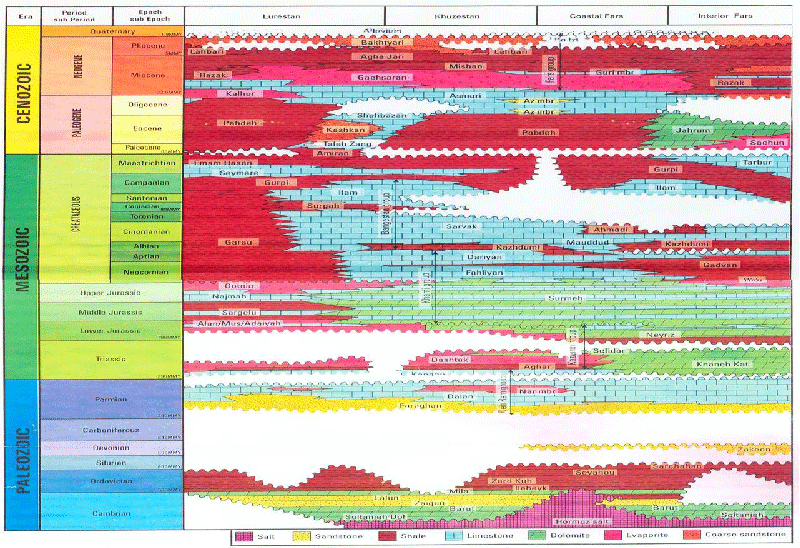 |
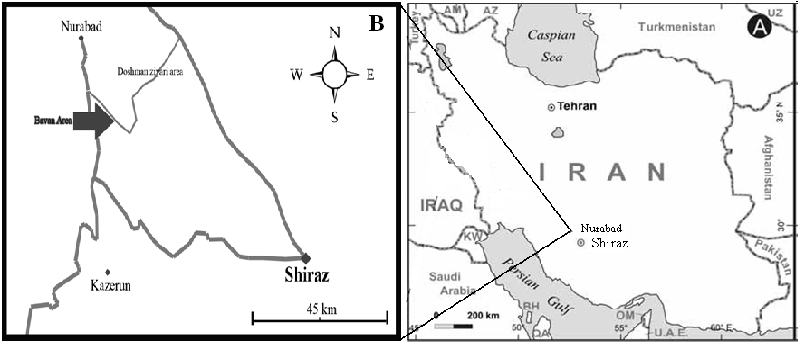 |
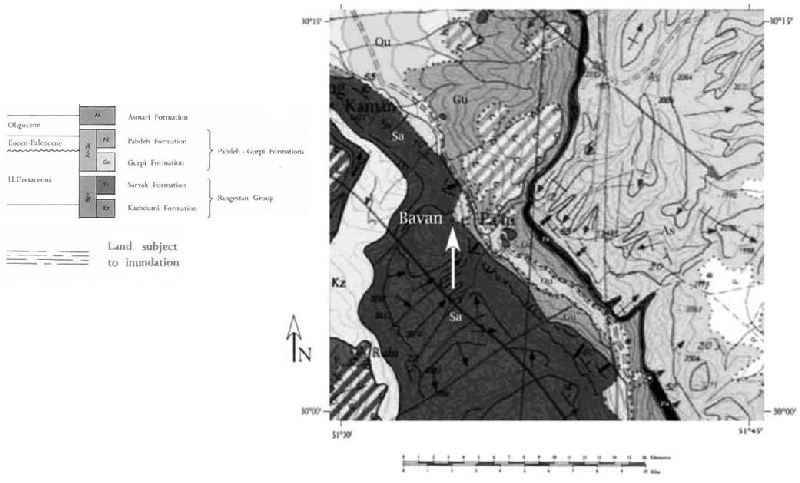 |
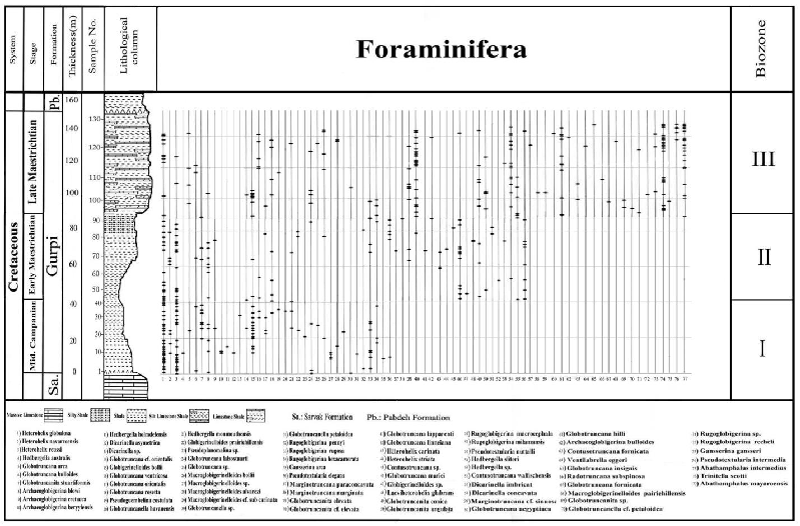 |
| Figure 1 | Figure 2 | Figure 3 | Figure 4 |
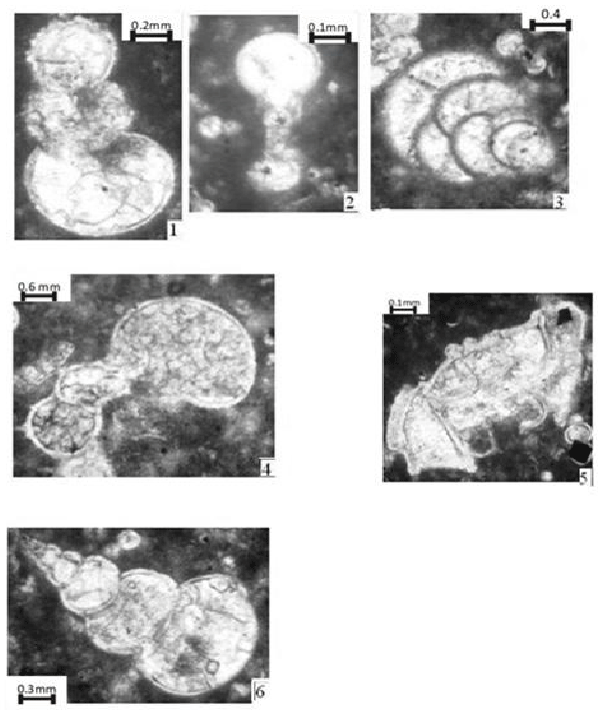 |
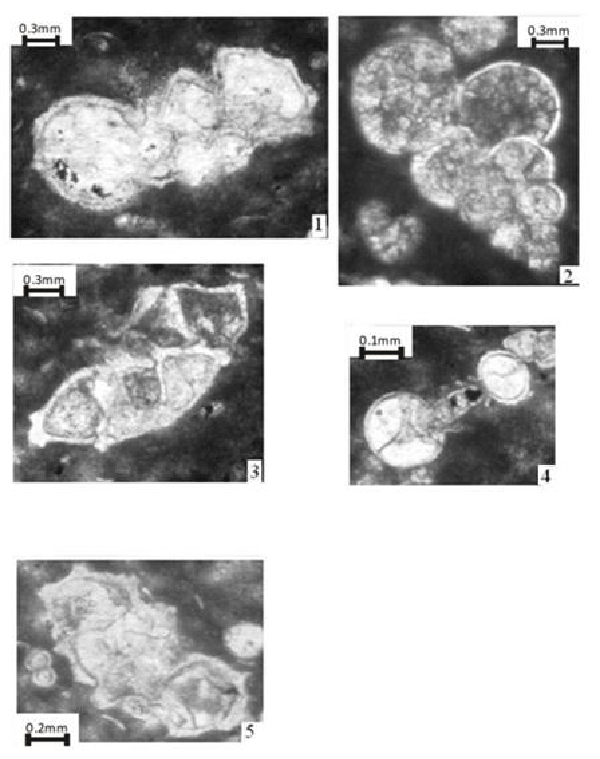 |
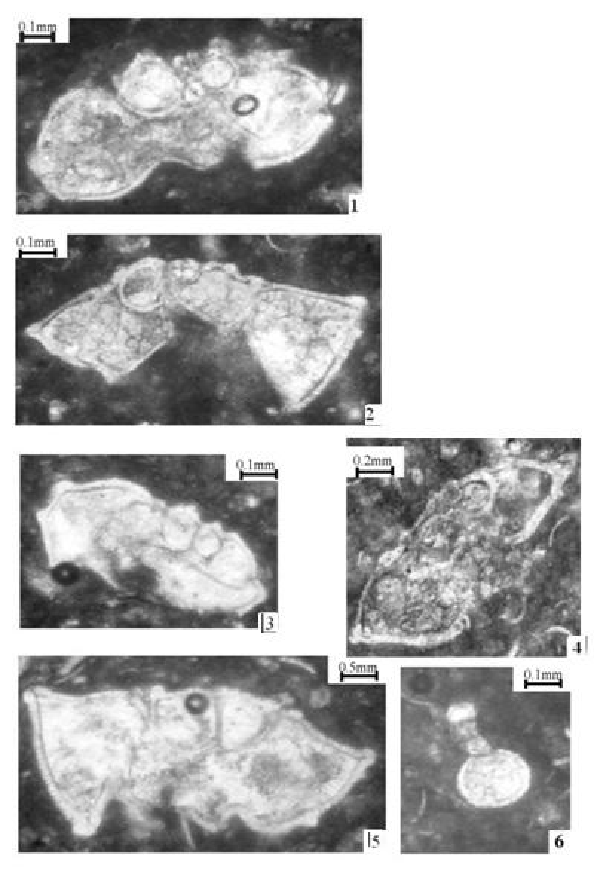 |
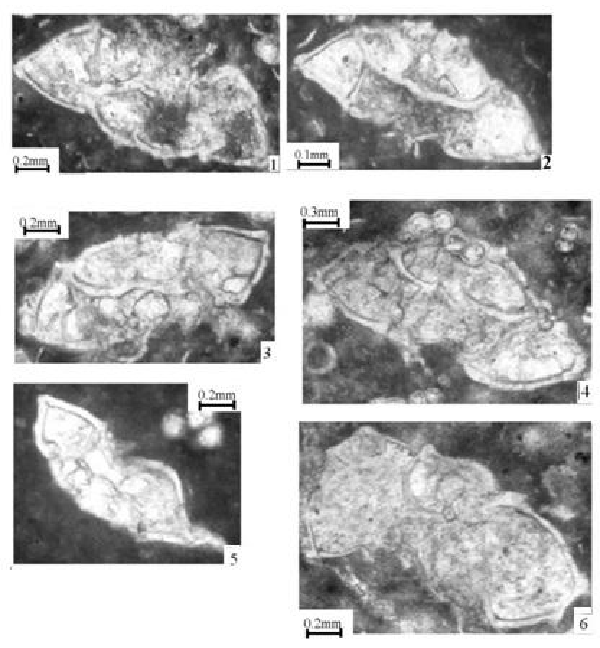 |
| Plate 1 | Plate 2 | Plate 3 | Plate 4 |
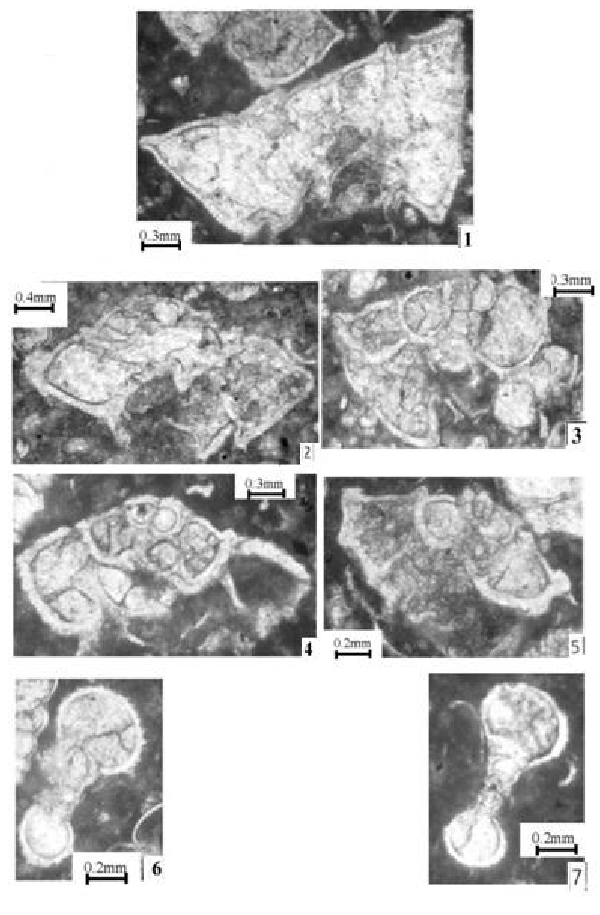 |
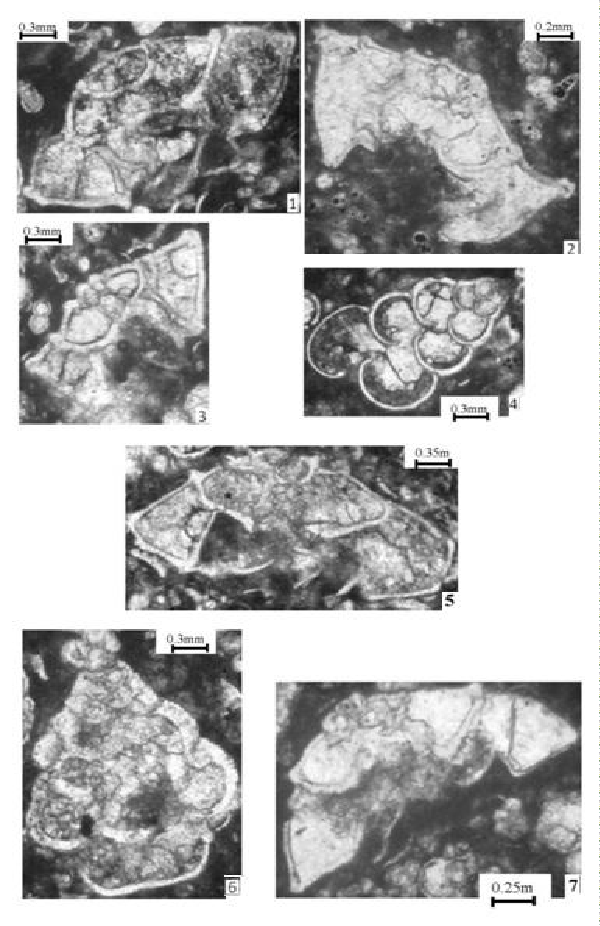 |
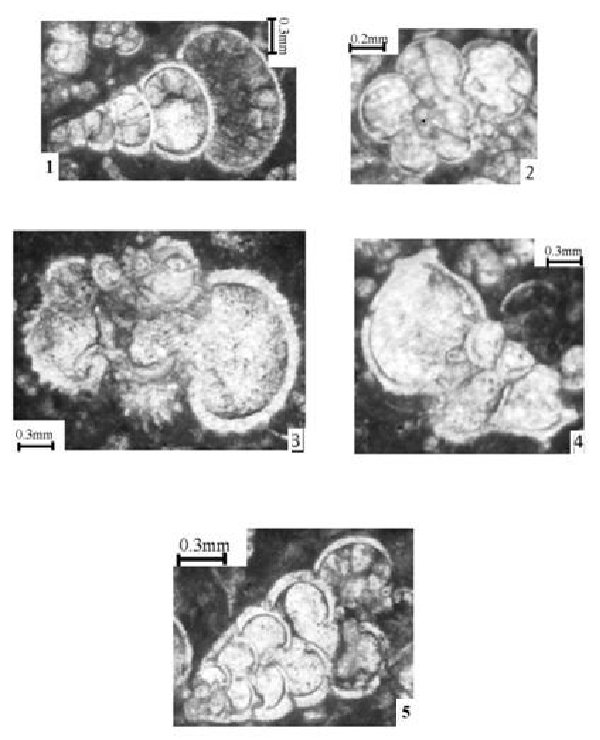 |
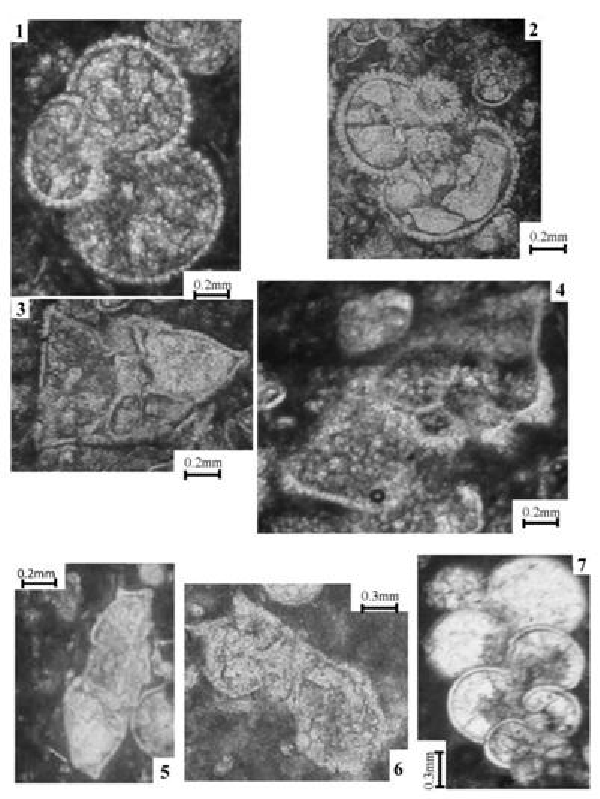 |
| Plate 5 | Plate 6 | Plate 7 | Plate 8 |
Relevant Topics
- Atmosphere
- Atmospheric Chemistry
- Atmospheric inversions
- Biosphere
- Chemical Oceanography
- Climate Modeling
- Crystallography
- Disaster Science
- Earth Science
- Ecology
- Environmental Degradation
- Gemology
- Geochemistry
- Geochronology
- Geomicrobiology
- Geomorphology
- Geosciences
- Geostatistics
- Glaciology
- Microplastic Pollution
- Mineralogy
- Soil Erosion and Land Degradation
Recommended Journals
Article Tools
Article Usage
- Total views: 16026
- [From(publication date):
July-2013 - Nov 16, 2025] - Breakdown by view type
- HTML page views : 11094
- PDF downloads : 4932
